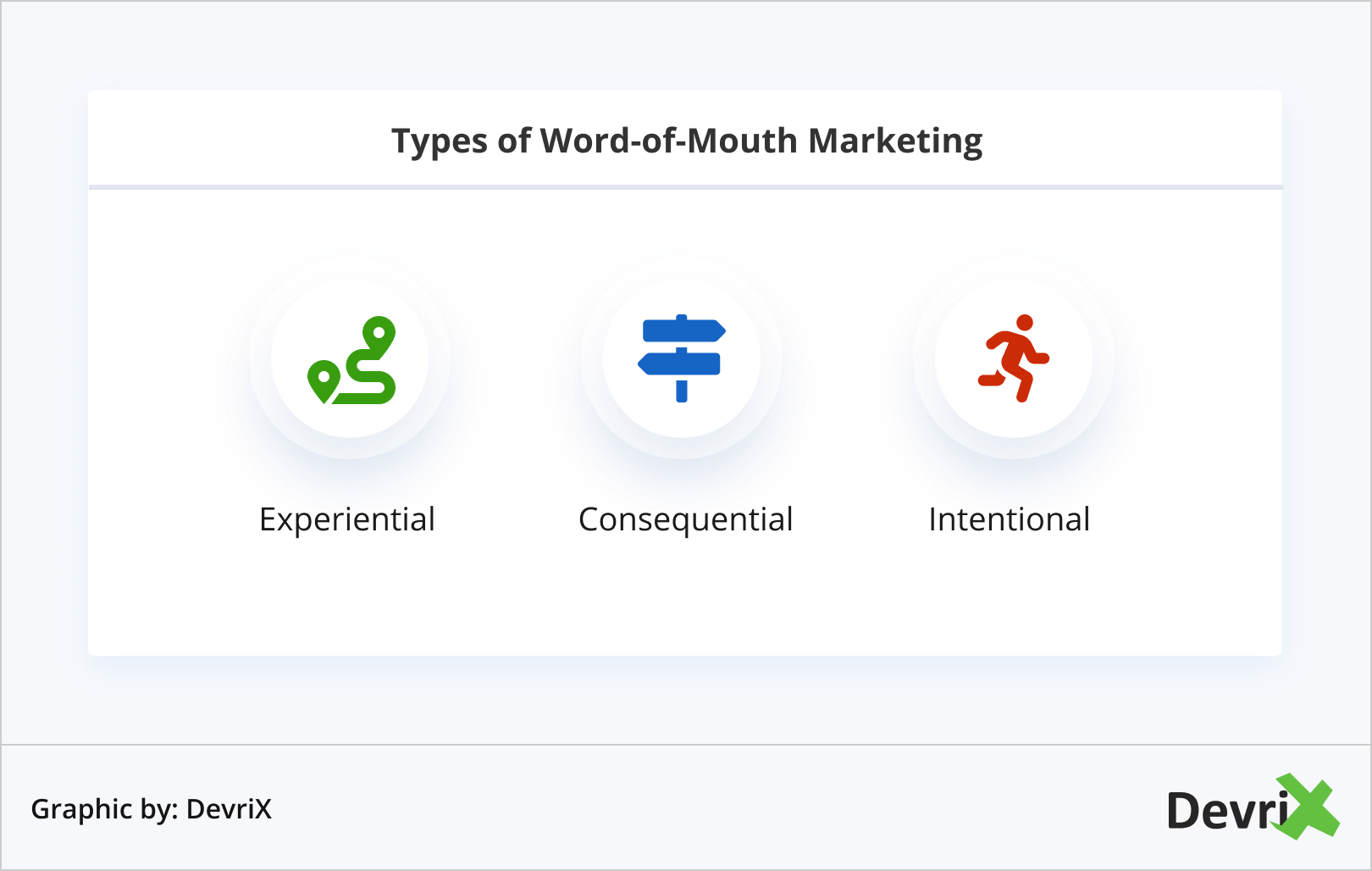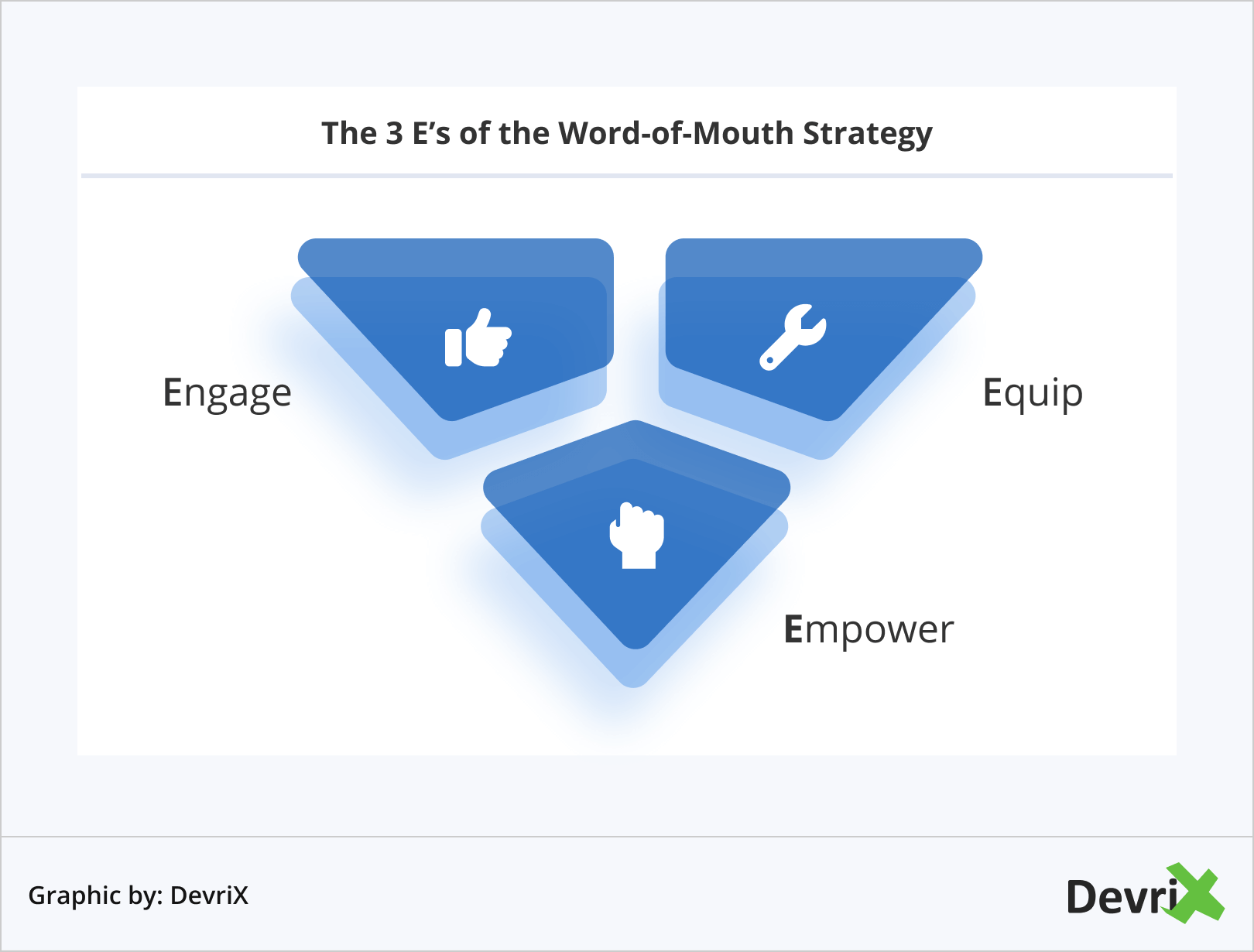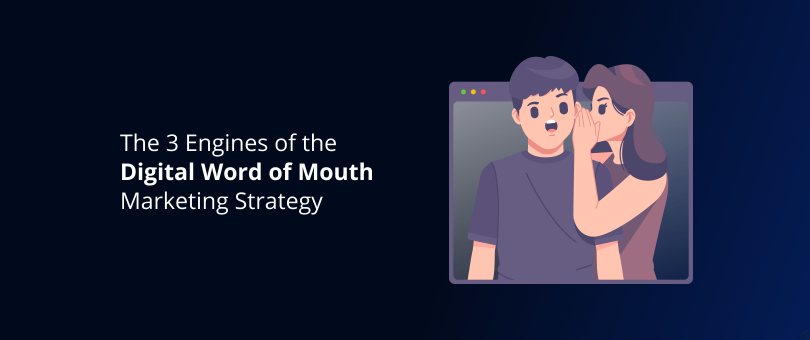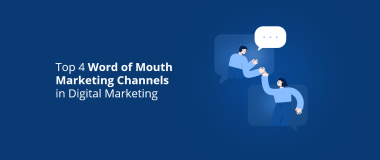Word-of-mouth advertising is a force to be reckoned with and to master it you have to build an effective word-of-mouth strategy around it.
A company can make an excellent product, invest hundreds of thousands of dollars in advertising, craft an insightful and clever marketing copy, and, yet, a customer may not buy their product simply because their BFF said it’s garbage.
At the same time, a different business may not have clever marketing and flashy branding but it’s a hit in a community just because X loves it and they’re a popular thought-leader.
And it’s not only the B2C field that WoMM dominates. The impressive 91% of B2B buyers state that they rely on peer recommendations when making purchasing decisions.
People tend to care about the personal experience more than they do about advertising. And why wouldn’t they? After all, the goal of an ad is to convince you to buy something whether you need it or not. Meanwhile, a personal recommendation shows that someone has tested the product out and has confirmed that it suits their needs and is of quality. Not only that, but they love it so much they have gone out of their way to tell others about it.
In a nutshell, that’s the power of word-of-mouth advertising. It’s something you have little control over but can make it or break for your reputation and business success.
That said, by following a consistent word-of-mouth marketing strategy, you can influence, to an extent, what people are saying about you, and even gently nudge the tides in your favor when you need to.
What Is Word of Mouth Marketing?
Word-of-mouth marketing (WoMM), also known as referral marketing, is based on peer-to-peer recommendations and feedback. People exchange their opinions and experiences about the products and services they have used with others Through WoMM, regular consumers become brand ambassadors and advocates and spread the word about their experiences, be they good or bad.
WoMM is probably the oldest and most valuable kind of marketing out there. In the offline world, word-of-mouth advertising is when people have everyday conversations and include brands and products in them. In the digital world, WoMM happens on social media networks, review websites, and digital communities where people gather around common interests.
To elicit such a conversation, the customer’s experience should be somewhat extraordinary in a positive or negative way. Otherwise, it is unlikely that they will want to share their excitement or frustrations with the world.
Types of Word-of-Mouth Marketing

There are three main types of word-of-mouth marketing you can leverage in your strategy:
- Experiential. This type of WoM is the result of a customer’s direct experience with the brand and is triggered by a discrepancy between expectations and reality. If the product or service is better or worse than what the person initially thought it would be, they may feel obliged to comment on it and to share their experiences with their peers.
- Consequential. Consequential word of mouth is when consumers are directly exposed to traditional marketing campaigns and pass on messages about them or the brands they publicize. The effect of the word-of-mouth interpretation of the advertisement can be even more powerful than the original message because now it has been saturated by the personal emotion it has provoked in the customer.
- Intentional. This is when companies contact celebrities and influencers to endorse a product and create interest around it. Intentional WoMM should be approached carefully because the reputation and actions – past and present – of the influencer or celebrity can influence the way people view the product.
How Does Word of Mouth Affect Marketing Success?

Word-of-mouth advertising has always been popular and influential, but the technological revolution and the en mass adoption of the internet are what made it matter at scale.
The digital age consumer is a social being. When they have an extraordinary experience they are eager to share it with everyone who’s ready (or not) to listen. If the experience was a good one, the customer may become a faithful brand ambassador and recommend you to others. If it was a bad one, they will be more than willing to rain hell upon you through every communication channel at their disposal.
Word-of-mouth advertising is all about passion and excitement, and these are truly contagious. On the internet, every user is directly connected to hundreds of other users, and, through them, indirectly to thousands more. People nowadays don’t spread the word only to their close circle of friends and family but to the whole online community.
And what they say can make a lasting impact on your image and your business performance.
Global research which includes people from 60 countries concluded that 83% of consumers rely on recommendations from friends and family as the most trustworthy source of information when making a buying decision. And 84% report that they follow up on these by actually making a purchase.
To make WoMM work in their favor, companies should produce quality products and work on maintaining a good online reputation, which is often taken for granted. But above all, they should compose a word-of-mouth marketing strategy and become involved in the conversation.
Defining the Digital Word of Mouth Marketing Strategy
There’s more than one way to create a buzz around a product or a service and, with a word-of-mouth marketing strategy, you can help set the discourse.
While with other classical marketing approaches, the brand has predominant control over the message it spreads, here the ball is in the consumer’s half and they are the ones who decide the verdict.
However, brands can still try to interfere by guiding the general direction of the conversation and have themselves shown in a favorable light.
Keep in mind that every product can become exciting and make people talk. Regardless of whether you are selling toothbrushes to B2C clients or SaaS software to B2B corporations, you have to make your audience care and talk.
As Suzanne Fanning, President of WoMMA (Word of Mouth Marketing Association), once said:
[…]Marketers need to focus on the three E’s: Engage, Equip, Empower. If you can master these, you can become the most beloved and talked about product in your category, which will ultimately lead to increased sales. We’ve seen a good WOMM campaign generate thousands of conversations, recommendations and triple sales in just a year (yes, even for the boring products).
The three E’s that Fanning is talking about are the foundation of every successful WoMM strategy, regardless of the channel where it unfolds. They are the most powerful tools in your arsenal when creating an extraordinary customer experience.

1. Engage
Building an engagement strategy enables you to stay in touch with your customers all the time and follow a consistent communication protocol that complies with your brand identity.
For your word-of-mouth marketing strategy to work, your customers should feel that you care about what they say and value their opinion. This makes your brand persona “part of the gang” and the center around which a community forms.
And while your most faithful brand advocates may feel connected to each other and start a brand-inspired community without your intervention, you should still join them. Being present and active will allow you not only to build loyalty but to influence their opinion and what they say about you.
2. Equip
Influencing word-of-mouth information is as much about your product and services, as it is about your customers. By knowing your target audience well, you can give them exactly what they need – a great product of high quality, the best customer service, and an extraordinary customer experience tailored to their preferences.
This is what can excite and inspire your regular consumers so they turn into brand advocates and become passionate about sharing your brand experience with others, and set the foundation of successful word-of-mouth advertising.
3. Empower
The freedom of speech that came with the internet has shown people that their opinions matter and their voices can be heard. You can leverage this, by providing different forms that challenge and inspire them to channel their WoMM energy and express themselves in creative ways.
The point here is that the efforts put into your word-of-mouth marketing strategy should start with you because when you are the one who gives someone power, you are the one who sets the rules.
Bottom line
Whether it is to praise you or level you to the ground, people will talk about you. By joining the conversation, hearing customers out, and guiding word-of-mouth in a favorable direction when necessary, your brand can become a part of the community you’ve inspired.




